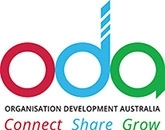with Geoff Fleming
General Manager VitalSmarts (Aust/NZ)
This was another well attended event that provided those in attendance with both a theoretical and hands-on experience with how to deal with difficult interactions in the workplace. Our presenter, Geoff Flemming, set the scene by exploring our behaviour when faced with difficult conversations and how we typically respond to them. He suggested we respond from either end of a “Silence to Violence” continuum, demonstrated by masking, avoiding or withdrawing behaviour at the silence end or controlling, labelling or attacking at the other.
Reasons for this are that people don’t know how to respond, are poorly equipped to do so, experience or expect strained relationships from doing so, use power or have it used against them or don’t think of consequences. Geoff said that what we can do about this include:
1. Addressing the issue at the time without making each other the problem
2. Have a teachable framework – hold people accountable for using the skills
3. Create processes that are the same for everyone, treat people equally
4. Feel valued
5. Have an engaged team
We workshopped how to equip those initiating or beginning a crucial conversation and suggested the following were important:
• Use inquiry e.g. “help me understand”
• Seek clarity
• Create time & space
• Appreciate what’s working in the relationship
• Ensure the context is known
• Don’t assume
• Share assumptions
• Be open
• Don’t pre-judge
• If not you, then who?
• Acknowledge emotions
• And the most important aspect of a crucial conversation was creating safety for all parties
A tool that VitalSmarts use in preparation for a conversation is called “CPR” which helps you decide the type of conversation you should be having. There are content conversations, pattern conversations and relationship conversations (if you are here, trust is probably broken), Deciding what the real conversation you should be having is critical to the outcome.
How we start a conversation is also critical- and Geoff referred to this as the “Hazardous Half Minute” (HHM). You need to know your intent or as Geoff and VitalSmarts say “Start with the Heart” and then match that intent with behaviour. We start by describing the gap i.e. “this is what we need & this is what we got” and then use STATE skills i.e. Share the facts; Tell the story; Ask for others’ paths (to dialogue or action); Talk tentatively and Explore’.
Other observations included when having a crucial conversation, you must also anticipate and share possible natural consequences, imposed consequences and hidden victims. If you are trying to get a conversation back on track you can use a skill called “Contrasting” e.g. “I don’t want to talk about …. but I do want to talk about ….”. Lastly, obstacles to having a successful conversation include fear, anger, jargon, body language obfuscation and being closed.
Overall. This was a great skills session and I want to thank Geoff for being so generous with his time and VitalSmarts’ content. As always we could have gone a lot longer.
